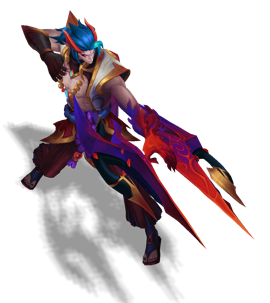If your League of Legends matches are plagued by lag, stuttering, or choppy animations, low FPS (frames per second) might be the culprit. While LoL is known for being accessible even on older PCs, FPS drops can still ruin critical moments—whether you’re mid-fight or trying to last-hit under turret.
The good news? You don’t need a brand-new gaming rig to improve performance. With the right settings and a few tricks, you can boost your FPS and enjoy buttery-smooth gameplay.
What Is FPS and Why It Matters
FPS refers to how many frames your computer displays each second. A higher FPS means smoother visuals and more responsive gameplay. Competitive players often aim for 120 FPS or higher, but anything above 60 is generally sufficient for most users. If you’re dipping below 30 FPS, you’ll likely feel the lag—especially during chaotic teamfights.
Step 1: Optimize Your In-Game Settings
The easiest and most effective way to improve FPS is by adjusting League of Legends settings directly in the client.

Graphics Settings to Tweak:
- Character Quality: Lower
- Environment Quality: Low
- Effects Quality: Low
- Shadows: Off (this setting has the biggest impact)
- Anti-Aliasing: Off
- Frame Rate Cap: Set to “Uncapped” or “144 FPS” if you have a high refresh rate monitor
- Enable Low Spec Mode: Yes – this reduces background processes like animations and the client’s visuals
These changes won’t make the game look gorgeous, but they’ll significantly boost FPS—especially on lower-end machines.
Step 2: Update Your Graphics Drivers
Outdated GPU drivers are one of the most common causes of FPS issues. Both NVIDIA and AMD frequently release performance-boosting updates for popular games.
To update:
- NVIDIA users: Use GeForce Experience
- AMD users: Use AMD Radeon Software
- Intel integrated graphics: Check Intel’s official website
Restart your system after updating for best results.
Step 3: Close Background Applications
Streaming music, watching videos, or running browser tabs in the background can eat up valuable system resources. Before you launch LoL, close:
- Chrome or other browsers
- Discord overlays
- Game launchers (Steam, Epic)
- System-intensive apps like Photoshop or OBS
You can check what’s running by opening Task Manager (Ctrl + Shift + Esc) and ending unnecessary tasks.
Step 4: Tweak Windows Settings
If you’re playing on Windows 10 or 11, some system-level tweaks can help:
- Enable Game Mode: Found in Windows Settings → Gaming → Game Mode. This prioritizes system resources for your game.
- Turn Off Xbox Game Bar: Also under Gaming settings, this feature can eat up performance.
- Adjust for Best Performance: Right-click This PC → Properties → Advanced system settings → Performance Settings → Check “Adjust for best performance.”
Step 5: Consider Your Hardware
If you’ve exhausted software tweaks and still struggle, your hardware might need a boost. Focus on:
- RAM: At least 8 GB is recommended.
- SSD vs. HDD: Running LoL from an SSD improves load times and reduces stuttering.
- GPU: A dedicated graphics card (even a budget one) performs better than integrated Intel graphics.
That said, League of Legends is designed to be forgiving. Even modest upgrades can yield a big impact.
Bonus Tip: Switch to Fullscreen Mode
Playing in Fullscreen instead of Windowed or Borderless can slightly boost performance by giving the game more direct access to your system’s GPU.
Final Thoughts
Getting more FPS in League of Legends isn’t about maxing out visuals—it’s about minimizing distractions, optimizing resources, and making the most of your current setup. Whether you’re climbing ranked or just want a cleaner experience in ARAM, these tweaks can help you stay smooth when the game heats up. After all, in League, every frame—and every click—counts.
Written by:
Christian


